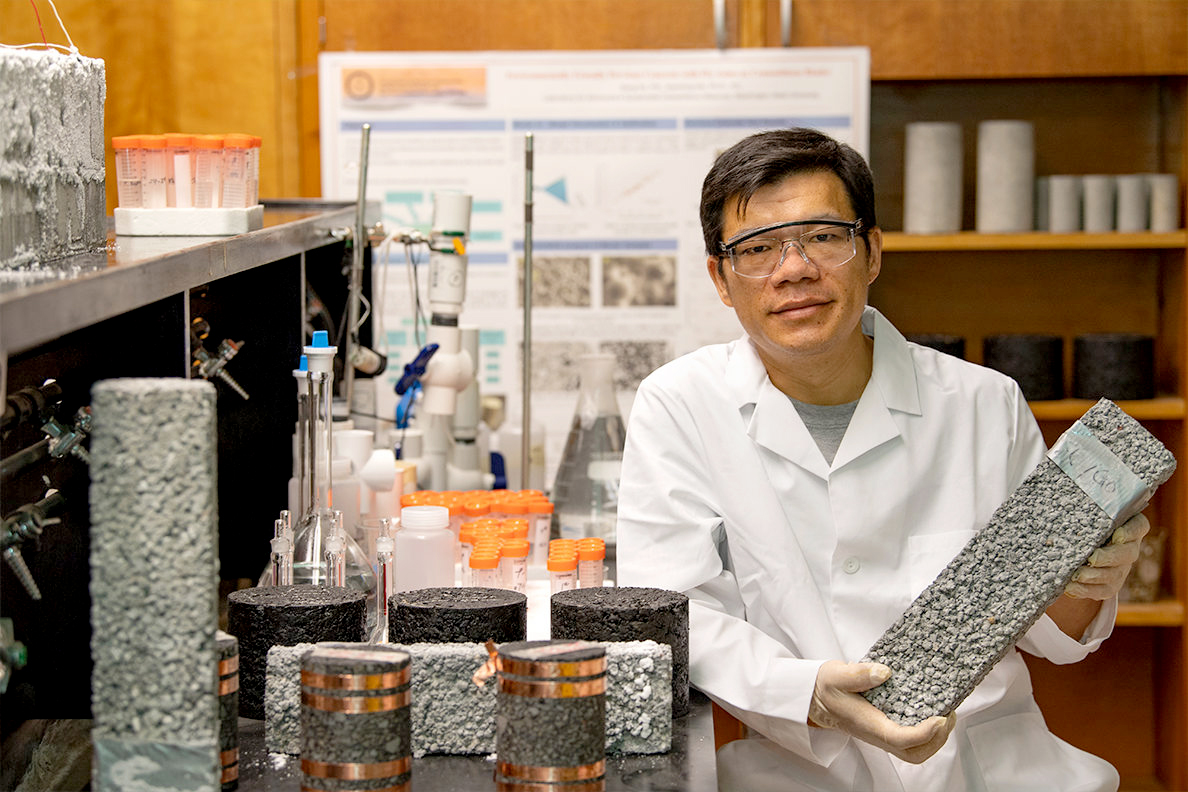
Washington State University (WSU) has been selected to lead a new national University Transportation Center that aims to address one of the nation’s key transportation priorities: improving the durability and lifespan of its transportation infrastructure.
Funded by a $7.5 million grant from the U.S. Department of Transportation (USDOT), WSU will work to advance research and education programs on the state of repair of infrastructure.
USDOT received 51 competitive grant applications for two new national University Transportation Centers. Along with WSU, the agency selected the University of South Florida to lead the other national transportation center with a focus on congestion relief.
“Traffic jams and potholes cause daily problems for motorists, wasting their time and causing damage to vehicles,” said Diana Furchtgott-Roth, Deputy Assistant Secretary for Research and Technology at USDOT. “These universities are taking practical approaches to these problems that will result in solutions that America needs now.”
The American Society of Civil Engineers graded America’s infrastructure a D+ in a 2017 report. It said one out of every five miles of highway pavement is in poor condition and more than 9 percent of roughly 600,000 bridges in the United States are considered structurally deficient. Furthermore, the U.S. highway system was built from the 1950s to the 1970s and is reaching the end of its lifespan.
“We have a vision to provide cost effective innovations and holistic solutions to enhance infrastructure,” said Xianming Shi, associate professor in the Department of Civil and Environmental Engineering at Washington State University, who’s leading the transportation center.
Extending the lifecycle of the nation’s transportation infrastructure is among existing issues under evaluation, noted Shi. Currently, the nation’s beset with a plethora of infrastructure problems, including the corrosion of reinforced concrete structures and steel bridges, he explained in a recent interview.
Natural disasters such as flooding also can stress critical infrastructure. Given that “we’re dealing with extreme events like climate change and natural hazards, with our infrastructure aging, or approaching (a stage) beyond their lifecycles, these issues are becoming even more difficult to manage,” Shi added.
Among areas under study are remote sensing and online monitoring of infrastructure assets, Shi said. For example, he and his colleagues could be exploring ultra high performance concrete and composite materials for retrofitting or rehabilitating deteriorating infrastructure. Meantime, on the management side, researchers are reviewing asset and performance management as well as tools to help reach what Shi called “better decisions.”
Failing to act, of course, would further hasten the deterioration of infrastructure, he said, and make repairs even more costly. He also emphasized a number of potential safety and economic-related issues stemming from an inability to keep pace with infrastructure repairs.
“Obviously, America’s infrastructure is already in bad shape, which is hurting our competitiveness in the U.S. and international economy. And because we’re deferring maintenance activities (due to a lack of funding), we’re basically making the problem bigger over time,” Shi said.
As the leader of the University Transportation Center, WSU will provide coordination, integration, program management, outreach, and fiscal management for the center. The consortium includes researchers from Missouri University of Science and Technology, Texas A&M University, Case Western Reserve University, University of Utah, University of Colorado, Denver, South Dakota State University, Florida Atlantic University, University of Mississippi, Alabama A&M University, and Tennessee State University.